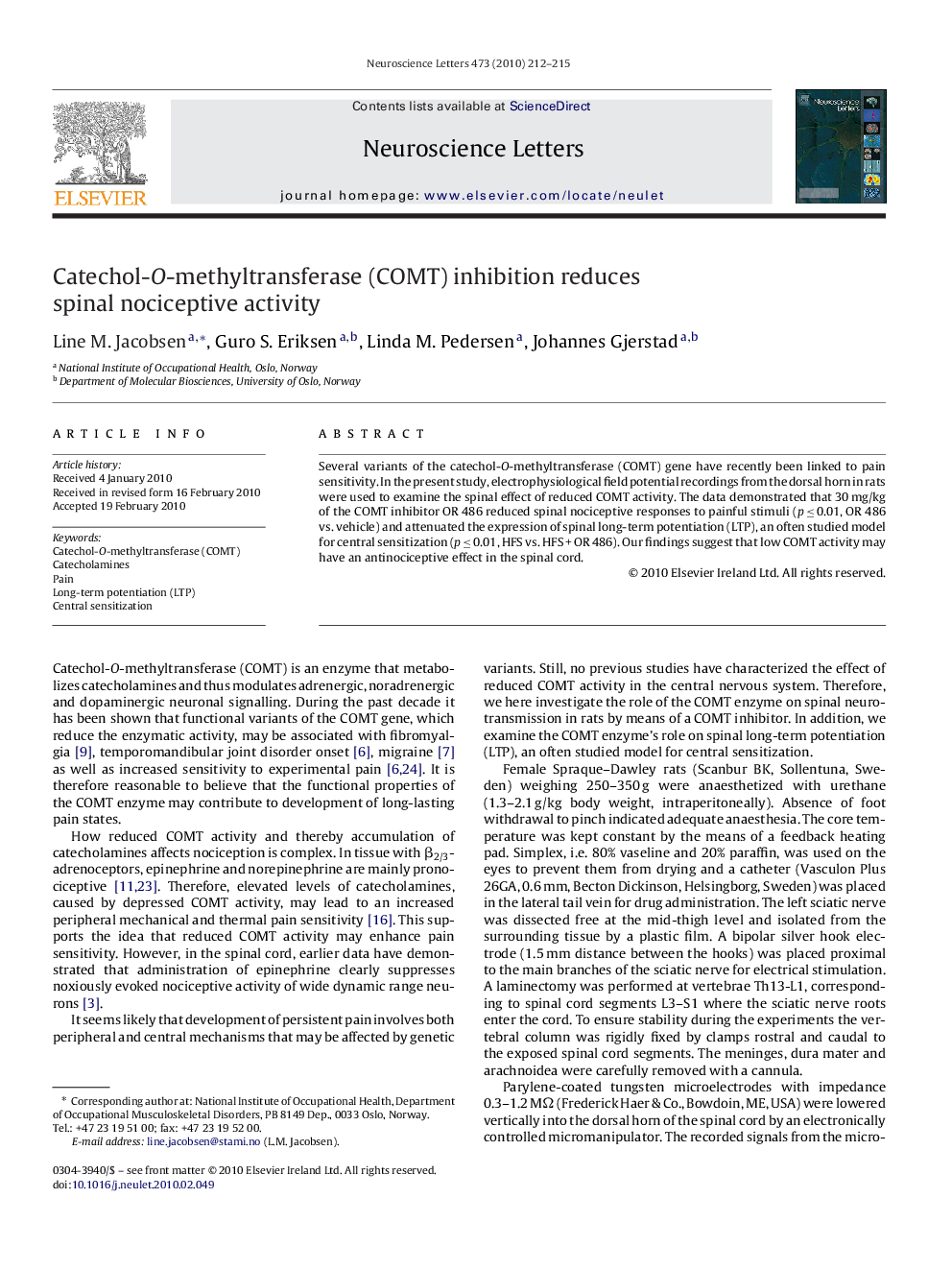| Article ID | Journal | Published Year | Pages | File Type |
|---|---|---|---|---|
| 4346149 | Neuroscience Letters | 2010 | 4 Pages |
Abstract
Several variants of the catechol-O-methyltransferase (COMT) gene have recently been linked to pain sensitivity. In the present study, electrophysiological field potential recordings from the dorsal horn in rats were used to examine the spinal effect of reduced COMT activity. The data demonstrated that 30 mg/kg of the COMT inhibitor OR 486 reduced spinal nociceptive responses to painful stimuli (p ≤ 0.01, OR 486 vs. vehicle) and attenuated the expression of spinal long-term potentiation (LTP), an often studied model for central sensitization (p ≤ 0.01, HFS vs. HFS + OR 486). Our findings suggest that low COMT activity may have an antinociceptive effect in the spinal cord.
Keywords
Related Topics
Life Sciences
Neuroscience
Neuroscience (General)
Authors
Line M. Jacobsen, Guro S. Eriksen, Linda M. Pedersen, Johannes Gjerstad,
